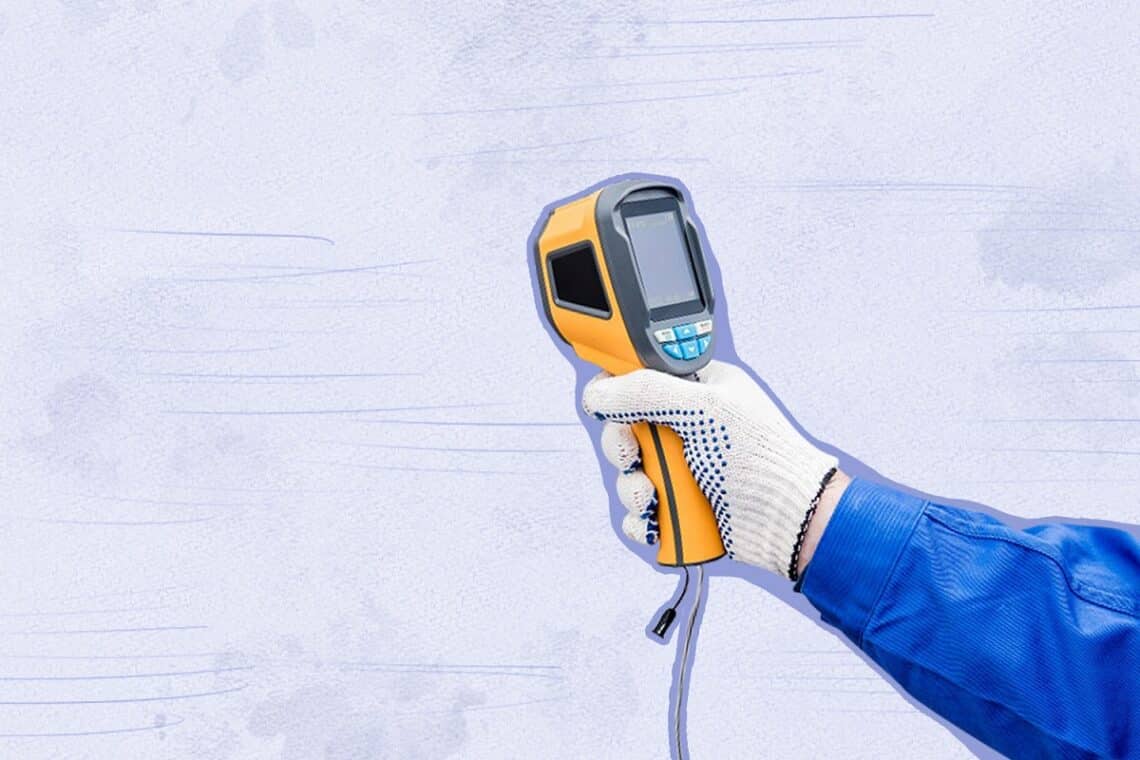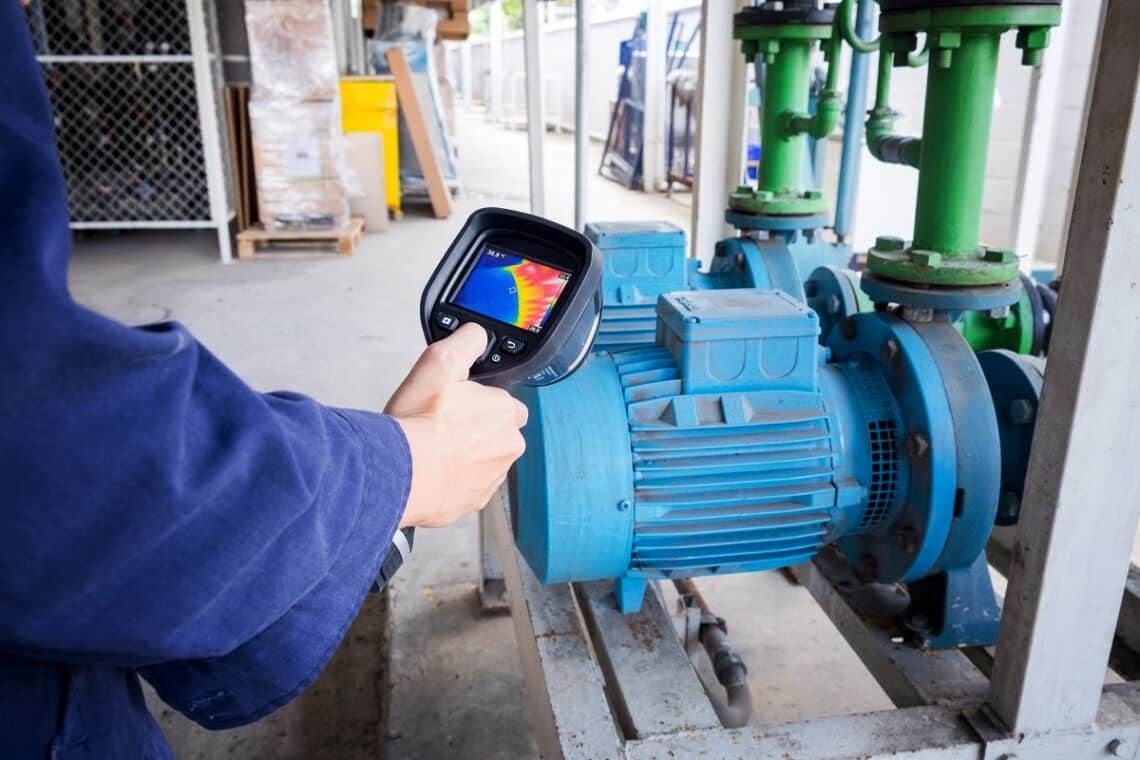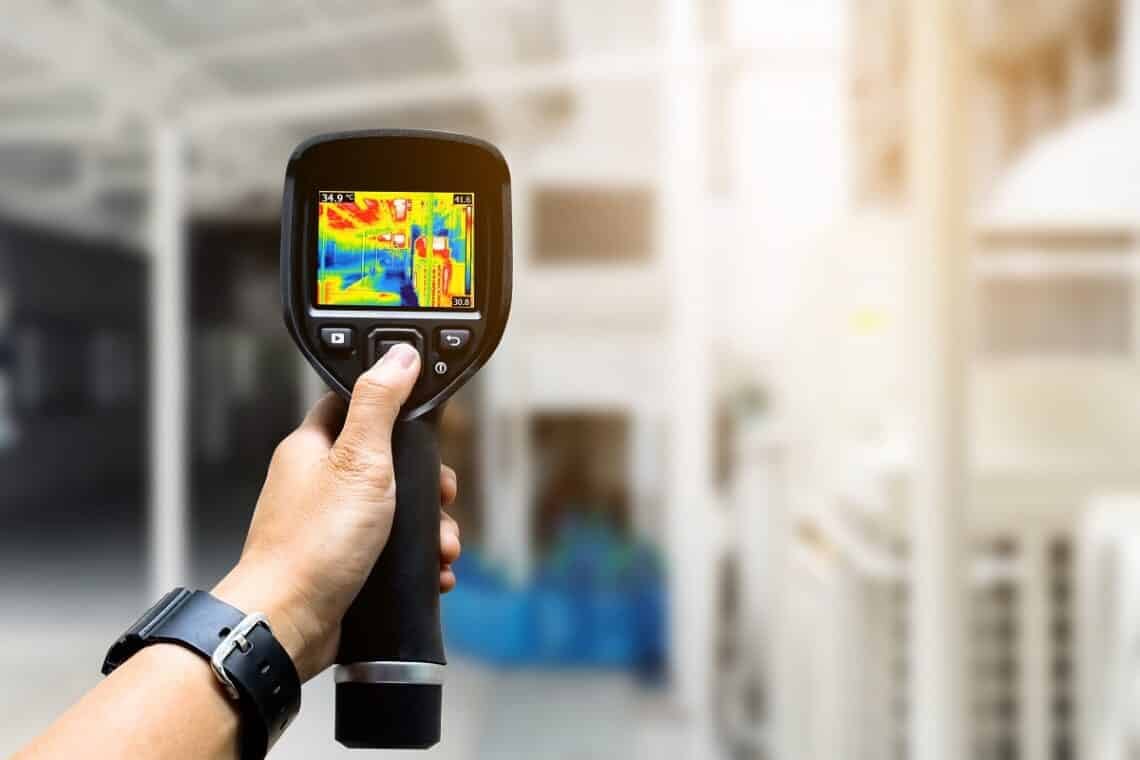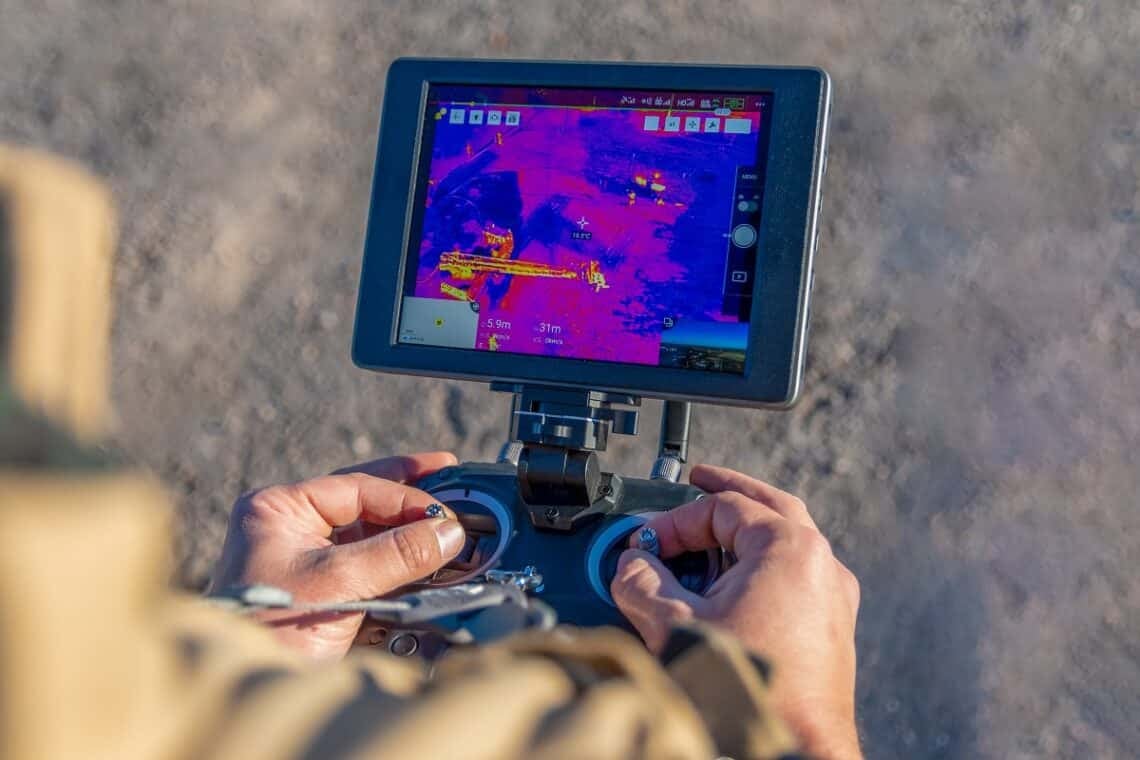Hiding behind a glass panel is the best way to disguise your body heat and trick the enemy’s thermal imaging camera from detecting you. Using thick and dense netting or space blankets are other effective strategies to avoid getting seen.
In ancient times, thermal imaging cameras were developed for military operations and surveillance. Fast forward to today, thermal imaging devices are used for industrial inspections, firefighting, scientific research, building inspections, and much more.
If these cameras detect and measure the heat signature of every object, is it possible to hide from thermal imaging technology? Like most people, if you’re wondering the same, read on to find out how you can hide from thermal imaging devices.
What Is Infrared Radiation?
Often known as infrared light, Infrared Radiation (IR) is a kind of radiant energy that isn’t visible to the naked eye. But surprisingly, longer wavelengths can be felt or sensed as heat.
As a matter of fact, every object, thing, and living being in the cosmos releases IR radiation, which can be captured only with thermal imaging technology. That’s because thermal imaging is considered as passive infrared, which collects heat or infrared radiation emitted by both objects and living beings. Then it displays the temperature of the captured objects, showing how cooler or warmer they are compared to their background.
Thermal pictures are easy to read, so thermal cameras are popularly used in hunting, military, medical, and engineering spheres.
How To Trick A Thermal Imaging Camera
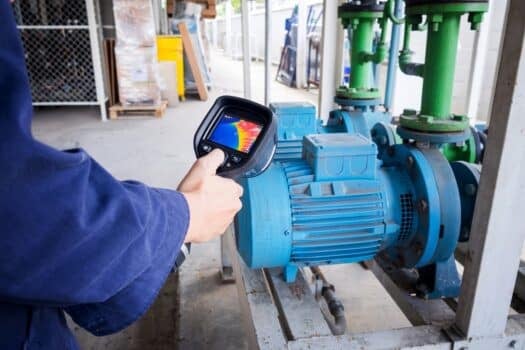
Small, compact, and lightweight– a thermal imager detects heat sources and transforms them into images. For this reason, it’s slightly challenging for humans to hide themselves from a thermal camera because it will detect their body heat just like it does for other objects.
However, as we’ve already mentioned, it isn’t impossible to trick a thermal imaging camera. While it does perform well in smoke and mist, its range may be affected by bad weather conditions.
To help you out, we’ve summarized 8 most effective ways you can disguise body temperature to prevent getting detected by thermal vision infrared devices.
1. Hide Behind A Glass
Don’t want to get detected by an infrared thermal imaging camera? Then hide behind a glass to block your infrared signature from getting captured.
Despite being transparent, glass blocks thermal radiation quite well. In other words, it hides you just like a high brick wall would, which is why concealing behind a glass panel is considered one of the most effective methods to block IR radiation.
2. Find A Background Similar To Your Body Temperature
No two objects emit heat the same way, which is why temperature differences are evident on a thermal imaging camera.
If you’re outdoors and running away to avoid getting detected by IR devices, look for a background that is close to 98°F like your body temperature. On sunny days, finding a wall that records the same temperature as your body may not be much of an issue.
In this regard, bare earth or brick walls will do the trick, and your body heat won’t be evident on a thermal infrared camera. Or, you can look for a vent releasing hot air and sit beneath it to conceal yourself. As the entire space will have an ambient temperature that’s warmer than usual, it will disguise your body heat well.
Surprisingly, water bodies can also save you from getting detected by a thermal imaging camera because it releases moisture into the air and hinders the effectiveness of IR devices. So, staying near a water body is another move you can make to mask your thermal signature.
Some people even hide in snow to prevent detection on an infrared imaging camera. However, you mustn’t do so because such uniform backgrounds make you noticeable, so it becomes easy for thermal imagers to detect heat signatures.
3. Space Blankets
Unless you’re a hiker, you must be hearing the term “space blankets” for the first time. These thermal blankets are made of Mylar Foil and are known to block heat signature. Thanks to their wind and waterproof coatings, hikers use them to keep themselves cozy on a chilly night but you can also use them to conceal yourself from thermal imagers.
For this reason, they are considered an effective strategy for hiding from thermal imaging cameras.
Note that a space blanket is a reliable option for concealing yourself only for a short time. That’s because the body heat is trapped within the blanket and escapes when you lift it. So, when your body heat gets out of the blanket, thermal vision IR devices will detect you right away.
However, the good thing about space blankets is that they are lightweight and don’t take up much space, so you can carry them in your backpack.
4. Warm Clothes
Wearing warm pants and a hat is another strategy to shield yourself from thermal vision IR devices.
Naturally, it won’t be as effective as hiding behind a glass or brick wall, but it certainly helps in reducing heat signatures. If you’re planning to follow this strategy, keep in mind that your body heat is likely to leak from the openings around the arms and neck.
Therefore, you’ll have to apply a thick layer of cool mud or dirt all over the face to mask the infrared heat produced by your body.
5. Thick Woolen Blanket
Though not as effective as space blankets, you can use a wool blanket to seek refuge from the lenses of a thermal camera. All you need to do is envelop yourself in a thick woolen blanket to block the body’s heat from getting detected by thermal vision IR devices.
Once you cover yourself with a woolen blanket, escape as quickly as possible and look for a better place to hide.
6. Set Things On Fire
If there’s no way to hide from the lenses of a thermal imaging camera, set fire to the objects and things around you. When multiple things emit heat, your body heat won’t be noticeable, and you’ll have ample time to seek refuge in a safe place.
In simple words, the enormous amount of heat released from burning things creates insulation that prevents thermal signatures from getting captured on IR devices. Also, make sure you stay as close to the heat source as possible to trick a thermal imaging camera.
7. Thick And Dense Netting
Have you ever come across thick nettings in a desert or woodland? If not, let us tell you that they are dark green and are often sold under the name of camo netting. And rightly so, since people use them to camouflage themselves from their enemies by blending with the trees and their surroundings.
The best thing about these nets is they are lightweight, yet they score high on durability. On top of that, they are available in various color options, from green to black and white, so you won’t have trouble finding one to conceal yourself.
8. UV Protection Umbrella
Umbrellas protect us against rain and sun, but did you know that they can keep you safe from getting detected by a thermal imaging device? Yes, you heard it right!
For a short period, UV umbrellas will keep you cool, which means thermal imagers won’t be able to detect your heat signature. However, you mustn’t rely on them for long periods. You can use them to conceal yourself, but try moving to a more secure place as soon as possible.
Stationary Vs. Movement– Thermal Cameras Are Likely To Detect Which Of The Two?
Few know that a stationary heat signature is easier to identify compared to a moving heat signature in darkness.
Much like other cameras, thermal imaging ones, too, have their shortcomings and they don’t focus on moving objects as accurately as night vision devices. For this reason, experts suggest opting for the latter for people who have to monitor a certain spot for a long period.
So, people who want to hide from being captured by a thermal imaging camera must trick the device by moving from one place to the other.
Thermal Imaging Principles For Avoiding Detection
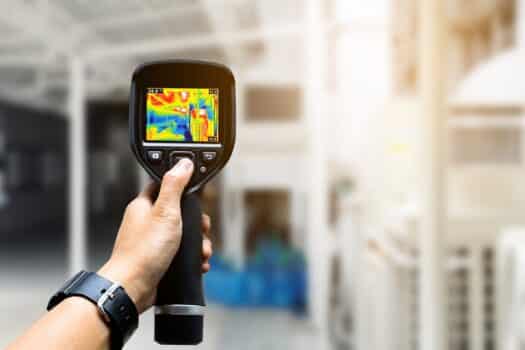
Escaping a thermal imaging camera isn’t easy, and you know that! But there are certain times when a thermal imaging IR device isn’t as efficient as it should be.
Here are two principles of thermal imaging cameras that will help you understand its workings to avoid detection.
1. Objects With A Stable Temperature
Thermal imaging cameras catch sight of objects with a fixed temperature more quickly than those with varying temperatures.
What’s even more challenging for thermal vision devices is to detect objects when different parts change temperatures at different rates. When that happens, various components of the object fade at separate intervals.
As a result, thermal imaging devices aren’t competent enough to detect subtle changes in temperature.
2. Understand Thermal Crossover And Reap Its Benefits
Anyone who wishes to avoid getting detected by a thermal imaging camera must understand thermal crossover.
It is basically a phenomenon that occurs when temperature conditions cause a reduction in contrast between two objects close to each other within a single frame, making them identical. This crossover phenomenon occurs twice daily and can easily be comprehended or predicted if you own a thermal imaging camera.
Therefore, we suggest taking your thermal camera to any open landscape and using it in different lighting conditions to understand its mechanism. Experts believe that thermal crossover proves beneficial for employing counter-surveillance techniques to make items appear significantly better than they are in reality.
Surprisingly, a thermometer can come to the rescue of survivalists in troubling times. To understand this, let’s assume that you’re in a desert and the daytime temperature is slightly over 100°F. As the sun goes down and darkness approaches, the temperature drops and is likely to be in the same range as your body temperature.
The temperature of the human skin is likely to be 91°F, which means the environment temperature will be within 100°F. Whenever there’s a drop in the temperature, thermal imaging cameras fail to respond as efficiently as they do in environments with static temperatures. Conversely, this thermal crossover will occur again when the temperature rises.
One trick you can employ to prevent getting detected by a thermal imaging camera is to curl up beside or behind large rocks. That’s because large rocks remain warm even when the temperature drops, so you’re less likely to get detected by thermal imagers.
And if you’ve got a multispectral netting, wrap it around your body to further lessen the chance of detection.
When Was Thermal Vision Invented?
In contemporary times, thermal cameras are used in almost every field, from engineering to construction. But have you ever wondered – when was thermal vision invented?
Though patented in 1914, the first infrared-sensitive camera was introduced in 1929 by Hungarian physicist Kalman Tihanyi for British air defense. Since then, thermal imaging has become an indispensable part of defense strategy and spread all over the Atlantic Ocean.
But thermal imagers couldn’t produce images until 1947 when a camera that could produce images was developed. Even then, creating photographs was a time-consuming process and producing one image took an hour.
In 1980 when Tihanyi left the military, Harpen introduced an uncooled, compact thermal imaging camera to measure temperature. Named Starsight, the camera scored high on versatility and was used for medical diagnosis, production line quality control, detecting damage to electrical appliances and equipment, and arresting drug smugglers.
Later, imaging speed was enhanced, after which thermal cameras were used in rescue operations. Firefighters used them to locate individuals stuck in blazing establishments while police officers also employed thermal imagers to track fugitives or spy on them in low-light conditions.
However, thermal imaging devices came with a hefty price tag, which is why they were beyond the reach of the masses. Towards the end of the 20th Century, these devices were made affordable, becoming popular among hobbyists and hunters.
The use of thermal imaging devices has now extended to various industries, such as medical diagnostics, building inspections, and security.
5 Lesser Known Facts About Thermal Imaging Cameras
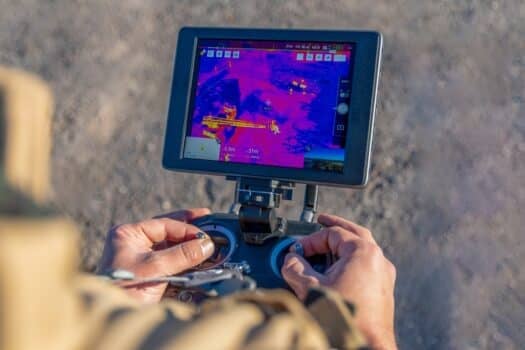
1. Capability Varies From Device To Device
Not all thermal imaging devices are made equal, which means capability varies from one model to another. And tricking different thermal imagers may be more challenging than you think.
A camera boasting a resolution of 320 x 240 can only detect heat signatures that are a mile away. In comparison, expensive thermal imagers that are most often used for patrolling the border can detect people as far as 20 miles away.
Whenever people try to prove that tricking a thermal imaging camera is easy, ask them about the model used for capturing the particular picture. After that, look into the specifications of the model to check if it’s high-end equipment.
2. Cannot Detect Tiny Differences In Temperatures
Thermal imaging cameras cannot record tiny differences in temperature like a thermometer would. Typically, their accuracy is close to +/- 2%, which is why they aren’t able to detect minute temperature variations.
What’s lesser known is that distance hampers their capability to record temperatures. So, the greater the distance, the more challenging it becomes for a thermal imaging camera to determine the temperature difference of a few degrees.
3. Warm Objects Stand Out In A Thermal Image
Thermal imagers capture heat sources and turn them into pictures, unlike a regular camera that uses visible light. As against a standard camera, warm-blooded beings standout against the background.
However, the only time warm objects don’t stand out against the background is when the temperature of the surroundings is in the same range.
4. Detect Almost Everything That Emit IR Radiation
Any object or human whose temperature is above zero emits IR radiation. Therefore, thermal imaging cameras more or less detect everything unless they are far from the lens.
And as human beings give off infrared radiation, it is nearly an impossible task to hide from thermal imaging devices unless you and the surroundings have the same temperature. If you wish to avoid getting detected by a thermal imaging camera, hide yourself in a safe place away from its lens.
5. Detect Heat Signatures Both Day And Night
If you think that thermal imaging cameras capture IR radiation only during the day, you’re wrong!
A thermal imaging camera doesn’t rely on visible light for capturing heat signatures. So, its efficiency isn’t affected by the presence or the absence of light. A thermal imager only relies on infrared radiation, which it is able to capture in both daylight and complete darkness.
How Does A Thermal Imaging Camera Work?
At this point you are most likely wondering how to use a thermal imaging camera. But rest assured, these small and compact devices are easy to use, and that has contributed to their popularity.
Let’s take an example– you’re a plumber who is unable to locate leaking pipes in a commercial or residential establishment because they are hidden from sight. Or, let’s say there’s an electrical fault, and you’re unable to understand which device is malfunctioning.
Either way, a thermal imaging camera will come to your rescue and save both your time and efforts. Just position the lens of a thermal camera towards the wall or the electrical outlet to capture the heat source and convert it into a thermal image.
Therefore, you can read the image, identify the source of the problem and fix it in the best possible way.
How To Trick A Thermal Imaging Camera FAQs
Thermal imaging cameras don’t work well underwater because water obstructs a lot of infrared wavelengths. Moreover, the heat capacity of water is much higher than that of air, so thermal imaging cameras cannot detect the heat energy of objects submerged in water.
No, thermal imaging cameras cannot see through walls, but they are capable of detecting the temperature of the first thing that catches their lens. Simply position the camera lens towards the wall, and it will detect the heat signature emitted outwards.
Thermal imaging cameras don’t need light to produce pictures, but night vision devices rely on visible light. This means the latter won’t produce good quality images if there is no visible light in the vicinity.

How To Trick A Thermal Imaging Camera Final Words
Though slightly challenging, it isn’t impossible to hide from a thermal imaging camera.
Whenever you wish to avoid detection, hide behind a glass or brick wall, as a thermal camera won’t be able to detect your heat signature. And if you’re a survivalist planning to hide in a dense jungle, don’t forget to pack a space blanket to avoid getting detected by a thermal imager.
Just remember to read our guide and follow the techniques we have mentioned, and you should be able to trick a thermal camera.



